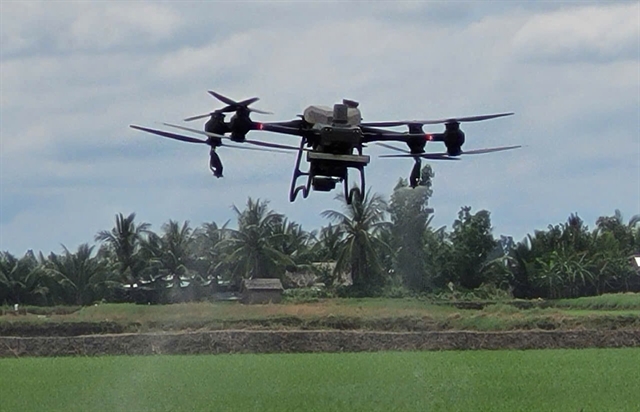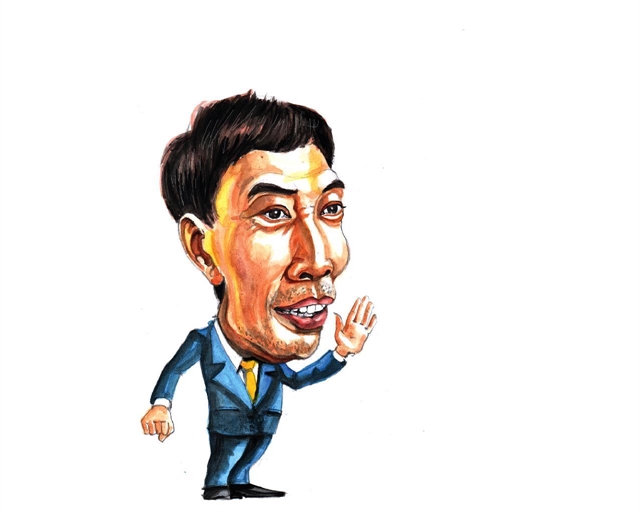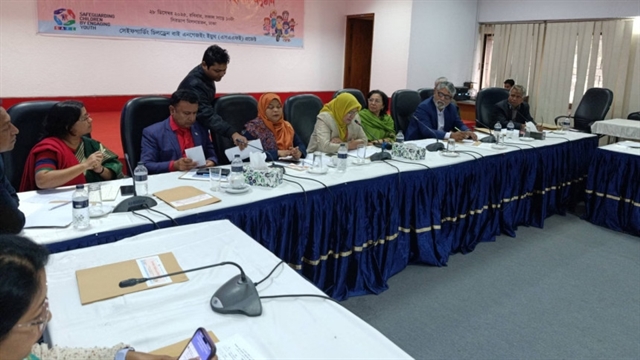 Economy
Economy

 |
Võ Trí Thành*
Consumption is a core component of a country’s GDP and plays a vital role in determining the health and stability of an economy.
Answering the question that to what extent consumption stimulation has real influence on economic growth needs deep and thorough analysis. Understanding this will help policymakers issue well-tailored and proper policies.
Theoretically, GDP is calculated using the expenditure approach: consumption (C) + investment (I) + net exports (X-M). Thus, consumption – often the largest component – is considered a key driver of economic growth and resilience for the following reasons.
First, rising consumption often signals consumer confidence, higher income levels, and employment stability. As people spend more, businesses grow, prompting further economic expansion.
Second, consumption directly contributes to the total value of goods and services produced within a country, thus increased consumption encourages businesses to produce more, which may require more labour, increasing employment and income. This in turn fuels more consumption – a positive feedback loop.
Conversely, when consumption declines, it can signal weakening economic conditions. Consumers may cut back on spending due to job losses, declining wages, or pessimistic economic outlooks. This can trigger a downward spiral of lower production, reduced investment, and rising unemployment.
 |
| Domestic consumption is likely to lose steam as consumers face uncertainties, along with changes to shopping trends. VNA/VNS Photo Trần Việt |
Việt Nam’s consumption market has emerged as one of the most dynamic in Southeast Asia, driven by a growing middle class, rapid urbanisation, and rising incomes. It is seen as an attractive destination for retailers due to its large consumer base – a population of over 100 million with more than half of whom under the age of 35 – and relatively untapped potential.
The Vietnamese market is not only defined by large corporations but also by millions of household businesses and small and medium-sized enterprises. These businesses play a critical role in domestic commerce and employment. However, most of them remain outside of global supply chains and depend heavily on the domestic market for survival and growth.
According to the latest report from the General Statistics Office (GSO) under the Ministry of Finance, consumer spending increased by 7.95 per cent in real terms in the first six months of the year, contributing 84.2 per cent to the GDP growth. This is a remarkable result, compared to the figure of the same period last year when consumer spending rose by 5.78 per cent, contributing 64.3 per cent to the GDP growth.
The larger contribution of consumer spending seems to be rationale when taking into account factors such as total retail sales and consumer services revenue and the number of foreign tourists to Việt Nam which also showed significant progress since the COVID-19 pandemic was controlled and the economy started to recover.
Consumption in the formula includes both government consumption and private consumption. Further, private consumption can be basically accounted for by the local people and foreign tourists. Data of consumption are also not broken down by regions or groups of population as well.
Unless the final consumption figure is fractionated, the effectiveness of consumption stimulus policies is not correctly assessed. A lack of disaggregated statistics can prevent sufficiently deep assessments from being a basis for good policies and meaningful stimulation measures.
Moreover, the proportion of contribution of consumption to GDP growth (84 per cent) seems to be overestimated. The reason lies in the way the GSO measures that did not deduct the consumption of imported goods and services. It is worth noting that the imported goods and services are not those produced locally, so consumption of those things has nothing to do with the country’s GDP.
Challenges to consumption
Despite this growth, global economic instability and persistent inflation have affected consumer behaviour, leading to more cautious spending habits. Moreover, there has been a notable shift in consumption patterns, with reduced spending on non-essential goods and increased spending on high-quality services.
Sustainable consumption trends are also gaining increasing attention among Vietnamese consumers, especially when it comes to environmentally friendly products. Specifically, according to an IFM survey in 2024, around three-quarters of Vietnamese consumers were willing to pay more than 20 per cent above the average price for products made from recycled or sustainable materials.
The survey also found that consumer spending on durable goods – such as household appliances, personal electronics, and cars – declined compared to the previous year. Consumption was shifting towards high-quality, branded products and services, with a greater focus on health and green lifestyles.
In the face of rising inflationary pressures, Vietnamese consumers had adjusted their spending habits, particularly in choosing value-for-money or reasonably priced products to maximise the effectiveness of their spending. In addition, the growing middle class was becoming a new driving force for the domestic consumption market, especially for premium goods and high-quality services.
According to the GSO's report on household living standards, Việt Nam’s average per capita income in 2023 at current prices was VNĐ4.96 million (US$190), an increase of 6.2 per cent compared to 2022. However, the income growth rate in 2023 was slower than the 11.2 per cent increase recorded in 2022 compared to 2021.
In 2023, the average monthly per capita income in urban areas was VNĐ6.26 million, nearly 1.5 times higher than that in rural areas (VNĐ4.17 million), while rural residents account for 62 per cent of the country’s total population.
The fact that most people still have low incomes, especially in rural areas, remains a major barrier to accessing high-quality products and services, and has significantly impacted the annual growth rate of final consumption. This situation calls for policy solutions aimed at improving living standards and enhancing the consumption capacity of low-income groups.
Policy recommendations
On the one hand, the Government will still need to focus on implementing demand-side economic policies in order to achieve high growth targets for the year.
Accordingly, besides effectively implementing the policy of maintaining the VAT rate at 8 per cent to the end of 2026, greater attention should be given to financial incentives for low-income groups to increase disposable income and encourage spending.
Việt Nam needs to strengthen consumer confidence through measures that foster patriotism, which can help boost consumer trust. It is essential to effectively and widely implement the “Vietnamese people prioritise Vietnamese goods” campaign, which would lead to increased spending, encourage domestic consumption, diversify products and services, and enhance product quality.
In the context of the rapid development of e-commerce, Việt Nam should be more proactive in embracing and utilising social media platforms. To achieve this, the country needs to address consumer concerns about shopping via social networks through concrete measures such as the effective control of quality of goods and products, and clear identification of both sellers and buyers.
Moreover, Vietnamese domestic products should be positioned as sustainable goods that are suitable for the majority of customer segments.
On the other hand, while strong consumption supports short-term growth, sustainable and balanced consumption is essential for long-term economic health. Over-reliance on consumption, especially driven by debt or unsustainable credit, can lead to financial instability.
To boost growth in the long run, it is critical to promote technological innovation and creative activities that need huge investment. Therefore, a balance between consumption and saving should be given more attention.
From January to June, the total retail sales and consumer services revenue at current prices is estimated at VNĐ3.41 quadrillion, up 9.3 per cent over the same period in 2024 (compared to an 8.9 per cent increase in H1 2024).Within this, accommodation and food services revenue increased by 14.7 per cent and travel and tourism services revenue surged by 23.2 per cent. When price factors are excluded, the growth rate is 7.2 per cent, higher than the 6 per cent growth recorded in the same period last year.In June alone, Việt Nam’s total retail sales of goods and revenue from consumer services, at current prices, is estimated at VNĐ570.2 trillion, a slight decrease of 0.2 per cent from May, but an increase of 8.3 per cent year-on-year due mostly to accommodation and food services (up 14.1 per cent) and travel and tourism services (up 23.9 per cent).These figures reflect a continuing recovery and expansion in domestic consumption, particularly in services such as tourism, food, and accommodation.International arrivals to Việt Nam in June reached 1.46 million, down 4.3 per cent compared to the previous month but up 17.1 per cent year-on-year. In the first six months of 2025, the number of international travellers to Việt Nam totalled nearly 10.7 million, an increase of 20.7 per cent year-on-year.
*Võ Trí Thành is former vice-president at the Central Institute for Economic Management and a member of the National Financial and Monetary Policy Advisory Council. With a doctorate in economics from the Australian National University, he focuses on macroeconomic policy, trade liberalisation, and institutional reform. He authors the Việt Nam News column Analyst’s Pick.




